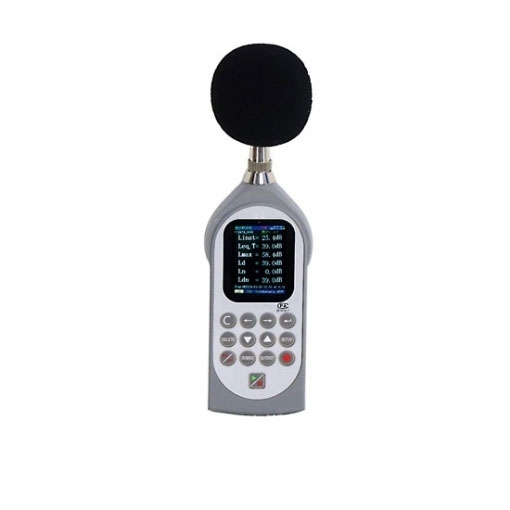The sound level meter also called the noise meter, is an instrument used to measure the sound pressure level or sound level of sound, is the most basic and most commonly used instrument in acoustic measurements, with the development of the national economy and the improvement of people's material and cultural living standards, noise census and environmental protection work carried out comprehensively.
The machine manufacturing industry has taken the noise as one of the important quality indicators of the product, auditoriums and gymnasiums, and other buildings do not only require the shape of the beautiful but also the pursuit of acoustics, all of which makes the sound level meter is more and more widely used. The buildings such as auditoriums and gymnasiums not only require beautiful shapes but also pursue acoustic effects, which make the application of sound level meters more and more widely.
Working Principle of the Sound Level Meter
- Sound Acquisition: A sound level meter uses a device called a sound sensor or microphone to capture the surrounding sound. The transducer senses changes in pressure in the air and converts it into an electrical signal.
- Electrical Signal Conversion: The captured sound signal is converted into an electrical signal, which can be accomplished by a piezoelectric element inside the sound sensor. The piezoelectric element generates an electrical charge when pressurized by sound waves, thus generating an electrical signal.

- Electrical Signal Processing: The generated electrical signal may need to undergo processing steps such as amplification, filtering, and adjustment to make accurate measurements in subsequent steps.
- Sound Intensity Calculation: By measuring the amplitude of the electrical signal, a sound level meter can calculate the intensity of the sound. Sound intensity is usually expressed in decibels, a logarithmic unit used to compare the intensity of different sounds. Calculation of sound intensity involves comparing the measured electrical signal to a reference level, which is then converted to a decibel value.
- Display and Recording: A sound level meter usually has a display that shows the measured sound intensity value on the screen. It may also have a recording function that allows the measurement results to be stored for subsequent analysis and comparison. sisco company offers precision digital sound level meters with digital output interface for remote measurements, accurate measurement ranges for noise levels in factories, buildings, and other working environments, advanced digital detection technology, good stability, and wide dynamic range.
Advantages of Sound Level Meter
Accurate Measurement Capability: Sound level meters can accurately measure the intensity of sound in the environment, expressed in decibels. This makes sound level meters very useful in situations where accurate assessment of noise levels is required, such as in industry, transportation, construction, and environmental monitoring.
Easy to Operate: Sound level meters are usually designed to be simple and easy to use. Most sound level meters are equipped with an intuitive control and display interface that allows the operator to take measurements and readings quickly.
Fast Response: Sound level meters respond quickly to changes in ambient sound, which is important for monitoring changes and trends in noise sources. This fast response makes sound level meters ideal for monitoring temporary events or sudden noise bursts.
Mobility: Many sound level meters are designed to be portable, such as digital sound level meters, which makes it easy for the user to take measurements in different locations. This mobility makes sound level meters ideally suited for making noise level measurements in different environments to assess the impact of noise on human health and the environment.
Data Logging and Analysis: Some sound level meters have a data logging feature that automatically records measurements over some time. This data can be used for subsequent analysis and comparison to help identify patterns and trends in noise sources.
Standardization and Regulatory Compliance: Sound level meters often follow international standards, to ensure the accuracy and consistency of their measurements. This makes them useful for regulatory compliance, environmental protection, and health and safety.
Education and Advocacy: Sound level meters can be used in education, advocacy, and public awareness campaigns to help people understand the impact of noise on health and quality of life, thus promoting social concern about noise issues.
Sound Level Meter Application Areas
- Noise Control: Sound level meters can be used to monitor noise levels in industrial, transportation, construction, and other environments to ensure that they do not cause excessive disturbance to people's health and peace of mind. For example, urban planners and environmental agencies can use sound level meters to assess noise pollution levels and take appropriate measures.

- Environmental Monitoring: Sound level meters can be used to monitor sounds in the natural environment, for example, to study animal behavior, bird calls, and other acoustic phenomena.
- Acoustic Research: In acoustic research, sound level meters are used to measure the intensity and frequency distribution of sound to help scientists understand the characteristics of sound and how it propagates in different environments.
- Engineering Applications: In construction, aerospace, and automotive engineering, sound level meters are used to evaluate noise levels in machines, equipment, or work environments to design quieter and more comfortable products or workplaces.

